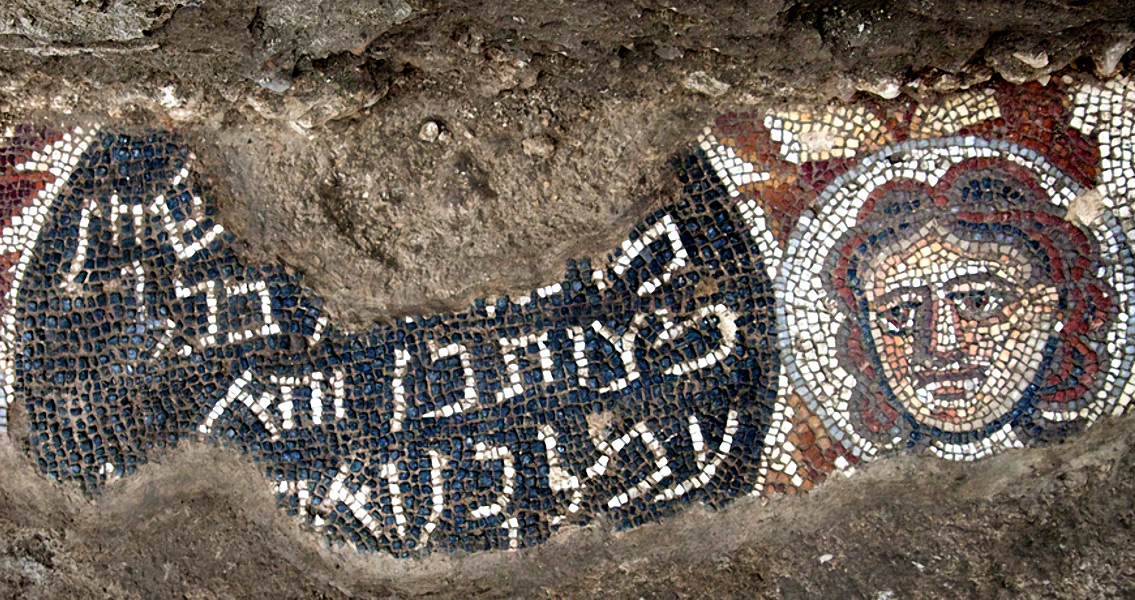<![CDATA[A team of archaeologists working in Israel have found a series of stunning mosaics in the remains of a synagogue in the village of Huqoq, in Lower Galilee. The mosaics depict, among other things, images of women surrounded by cupids holding discs, a rooster, theatre masks, mythological creatures and symbols associated with Bacchus, the Greco-Roman god of wine. Constructed out of minuscule, earth hued stones, the images are remarkable for the level of skill which went into their creation, and the artistic quality they display ."These are unique discoveries", Jodi Magness, the Arts and Sciences professor from the University of North Carolina at Chapel Hill who directed the excavations, said in a statement about the latest findings. Evidence of mosaics and other unusual artefacts at the site was first discovered in 2012. Since then, excavations have taken place every year to reveal more of the ancient artworks. The project is co-directed by Shua Kisilevitz from the Israeli Antiquities Authority. As well as the stunning beauty of the artwork on each mosaic, the images they display are historically very significant. The initial mosaic discovered in 2012 depicts images of Samson's revenge on the Philistines. The high quality, brightly coloured image features Samson tying flaming torches to the tails of foxes in order to burn his enemies' crops. It was only the third portrayal of Samson ever found in a synagogue, and the first to depict this revenge story. The fact that one of the other depictions was found in a nearby synagogue leads to the conclusion that Samson's story must have been particularly popular to the people who lived in this area. A mosaic unearthed in the synagogue's eastern aisle in 2013 features three horizontal strips containing humans, and animal figures such as elephants. The images in the top section are believed to represent a meeting between Alexander the Great and a Jewish high-priest, according to Magness. The discovery marked the first time that scenes depicting a non-biblical story had been found in an ancient synagogue. The most recent dig, which took place earlier this summer, unearthed an additional section of the mosaic depicting Alexander the Great, and the rest of a mosaic next to it which features a Hebrew dedicatory inscription. The latest excavations revealed that the inscription was located in the centre of a larger, symmetrical design featuring "human figures, animals and mythological creatures arranged symmetrically around it", Magness said. Magness added in the statement that it was not yet clear if the mosaics at the site held a thematic connection. The synagogue of which the mosaics form a part was constructed in the Late-Roman period, sometime in the fifth century. Magness told Livescience in July 2012 that the synagogue had likely been the only place of worship in the small village of Huqoq. She explained that the lavish designs of the synagogue would have been unusual for such a small village, suggesting Huqoq could have been a particularly affluent place. Magness and the other scholars working at the site are currently trying to work out why the synagogue featured the prominent, non-secular mosaic. Further excavations at the site are scheduled for summer 2016. For more information: www.uncnews.unc.edu Image Courtesy of Wikimedia Commons user: Jim Haberman ]]>
Unique Mosaics Found in Synagogue in Galilee
